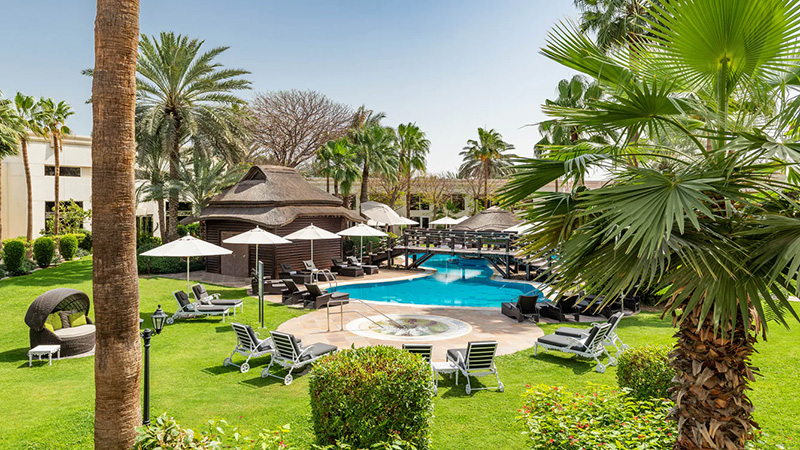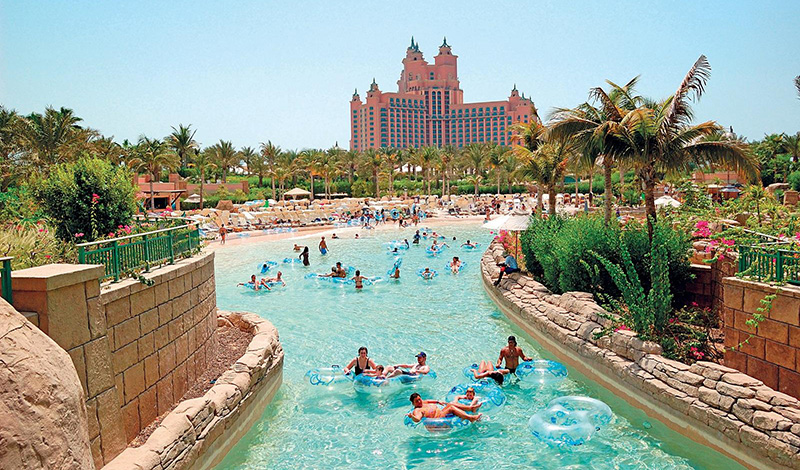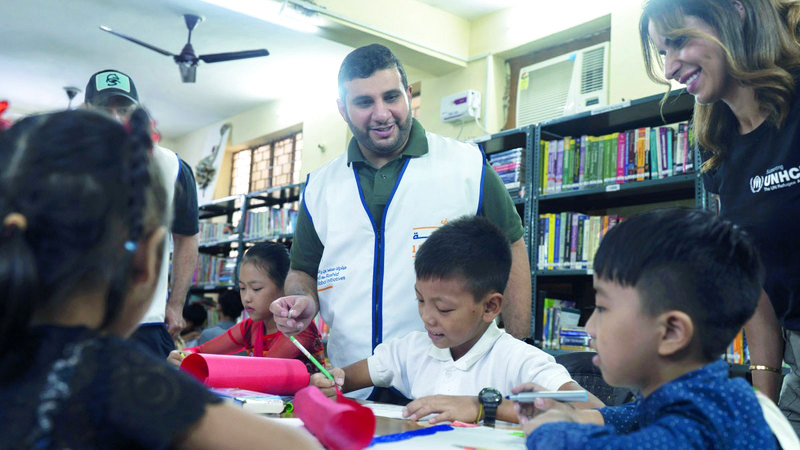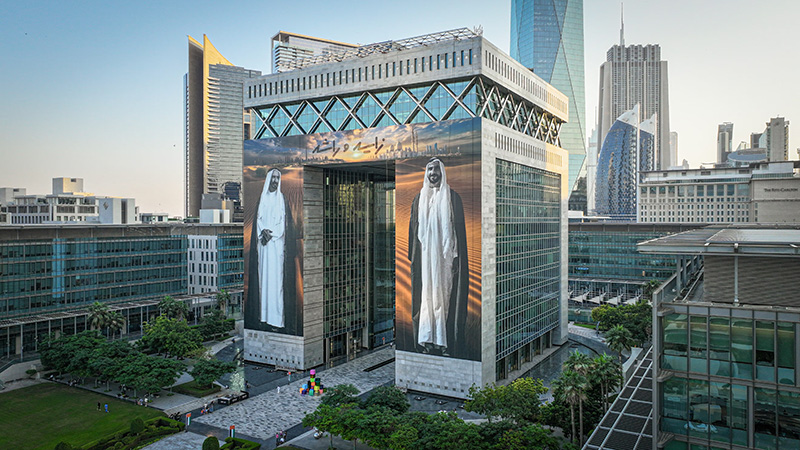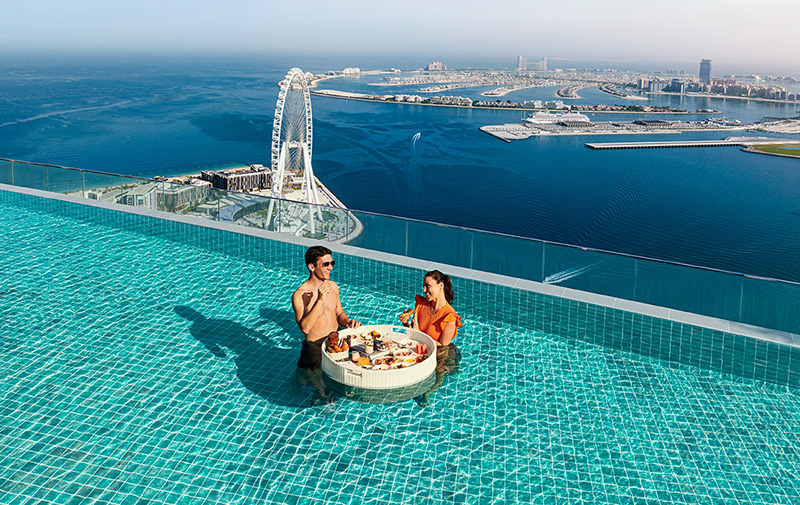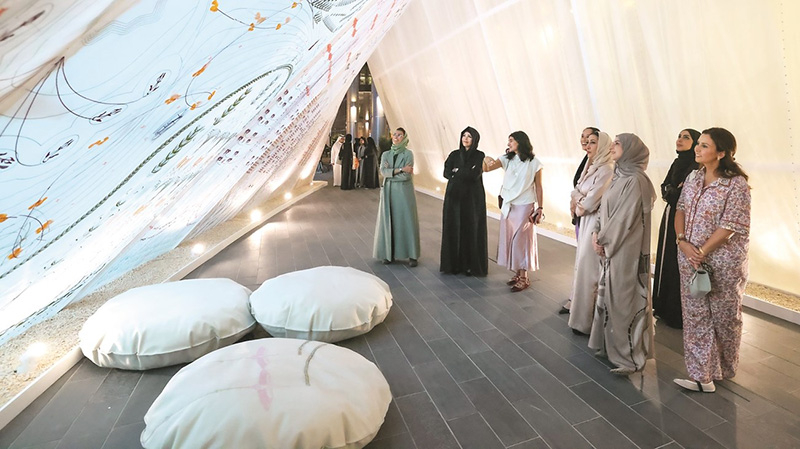
Since humankind began organizing its economic life, its first need was to find a safe place that brings together the seller and the buyer and allows the exchange of benefit in an orderly manner. The issue was not tied to goods alone, but to a deeper concept: the need for trust, for every trade at its core is a social contract before being an exchange of products. This need produced throughout history different models of trade establishments, which started simple then evolved as the movement of people and goods expanded. The oldest of these models were the “khans” or caravanserais that spread along old trade routes. Those buildings provided merchants a safe place to rest, store goods, and strike deals, and their presence meant that markets were no longer linked only to the seasonal timing of caravans but became more regular and capable of expansion.
And after centuries, European cities began to reformulate this idea in a more organized way. In the Belgian city of Antwerp, the “Handelsbeurs” building was constructed in 1531, the first building entirely dedicated to the trading of goods and contracts. This model reinforced the notion that trade requires an organized legal space that links producers with traders and mitigates the risks of the open market. In the twentieth century, the United States revived the idea once again. The International Trade Mart was erected in New Orleans in 1968 to gather under one roof banking, logistics, and trade promotion services. From this experience, the World Trade Center’s Association (WTCA) was founded in 1970, a nonprofit network aimed at setting unified standards for these centers and facilitating communication between major cities.
In this global context, Dubai chose to build its own platform. The motivation was not merely its geographic location, but the desire to provide an integrated business environment that reduces market risks and strengthens trust between economic parties. In 1979, “Sheikh Rashid Tower”, known today as the Dubai World Trade Centre, rose as the first skyscraper in the emirate and a place that brings together companies, exhibitions, and international conferences. The presence of the Centre was a strategic step to diversify the economy and present Dubai as a comprehensive business destination connected to the world through its infrastructure and trade networks.
From the simple caravanserai to the European exchange to modern World Trade Centers, it is clear that these establishments are not merely economic buildings, they are social and economic institutions that reflect in each stage humanity’s ability to build trust and organize exchange in an ever-changing world.
Beginnings
The idea of establishing the Dubai World Trade Centre took shape in the early 1970s, when Sheikh Rashid bin Saeed Al Maktoum, the Ruler of Dubai at that time, recognized the significance of Dubai’s location at the crossroads of trade routes. In 1974, Sheikh Rashid commissioned British architect John Harris to design an integrated tower and conference center, drawing inspiration from global models such as the World Trade Center in New York and contemporary projects in Tokyo. After the initial blueprint was presented, Sheikh Rashid directed that the project be scaled up to include a towering skyscraper exceeding the traditional function of exhibition halls. Construction began that same year and was completed in 1979 with a height that made it the tallest in the region at the time. The construction was financed locally and executed in an architectural style mindful of the climate and traditions, and it was officially inaugurated on 26 February 1979 in the presence of Queen Elizabeth II, an early indication of the Centre’s international dimension from its very start.
The tower’s location was carefully chosen on the Abu Dhabi–Dubai road thanks to Sheikh Rashid’s guidance. Mark Harris, the son of architect John Harris, recounts that the design “went through several proposed sites, but Sheikh Rashid insisted on this particular site to encourage the city’s westward expansion.” This decision came at a time when commercial and residential activity was primarily concentrated in Deira and Bur Dubai, imparting a strategic dimension to the choice by pushing development toward new horizons. With this decision, the site became a cornerstone of deliberate urban planning rather than a mere spontaneous choice. The Centre began with its core function as an international exhibition complex, keeping in view, according to its official website, that it be “a global edifice of business connecting East and West.” From the opening of its first halls, it attracted companies from different continents, indicating Dubai’s transition from a regional market to a global hub for trade and economy.

Dubai World Trade Centre Free Zone
In 2015, the Dubai World Trade Centre Free Zone Authority was established to serve as an exceptional destination for companies wishing to operate within a tightly regulated competitive ecosystem and to enhance their presence in regional and global markets. The Authority provides these companies a wide range of benefits, including 100% foreign ownership, 0% taxes and customs duties, and streamlined procedures for obtaining visas and permits. The Dubai World Trade Centre Free Zone extends from the famous Sheikh Rashid Tower to the adjacent One Central project, and grants licenses for more than 1,200 different business activities, hosting over 1,800 small and medium-sized companies.

Growth and Expansion Milestones Since Establishment
Today the Dubai World Trade Centre complex contains 21 exhibition halls spanning about 1.3 million square feet (approximately 120,000 square meters), according to the Centre’s recent records. In 1987, Halls 1 and 2 were opened, followed by Hall 3 in 1988, forming the initial nucleus of exhibition space. In 1996, Halls 4 through 8 were added all at once, expanding the space by roughly 300,000 square feet (27,870 square meters). Major growth spurts followed: the Convention Tower was built in 2003, linking the halls to a hotel and support services, then the complex’s capacity increased with the addition of the four Sheikh Saeed Halls and the Trade Centre Arena in 2009. The current configuration was completed with the opening of the Za’abeel Halls 1–6 in 2016, bringing the total infrastructure to 21 halls ranging from colossal exhibition spaces to flexible areas capable of accommodating any event, from international exhibitions to sporting championships.
This simplified sequence shows how the Centre transformed over three decades from three initial halls into an integrated exhibition city spread across more than twenty halls, serving thousands of events annually. The halls were linked by a central concourse, and the Novotel and Ibis hotels were inaugurated, giving the complex the name “Dubai International Convention and Exhibition Centre,” a sign of its evolution from individual exhibition halls into a comprehensive system for global conferences.
Today, the DWTC complex offers around 145,000 square meters of indoor, air-conditioned space, rising to about 160,000 square meters with the completion of the planned Dubai Exhibition Centre expansion by 2028. At the heart of this ecosystem is One Central, an urban mixed-use business district developed by the DWTC Authority within the Free Zone.
By the end of 2024, the Dubai World Trade Centre had reached a 95% occupancy rate, becoming an administrative hub that houses the headquarters of multinational companies and serves as an experimental space for hybrid work styles. This physical expansion was accompanied by a fundamental organizational shift after the establishment of the Free Zone in 2015: the first half of 2024 saw a 21% increase in the number of tenants, bringing the total to 2,735 companies, while the number of registered entities grew by 19% to 2,818, and direct employment jumped to 8,223 jobs.
These expansions have been reflected in economic impact: the 2024 agenda welcomed 2.65 million participants across 378 events, generating 22.35 billion dirhams in economic output, of which 13.04 billion dirhams was retained as direct value added to the GDP, in addition to supporting 85,533 jobs in the meetings and exhibitions ecosystem and its connected sectors. This performance bolsters the “Dubai D33” vision aimed at doubling the emirate’s economy over the next decade.

Local and Regional Impact
On the local level in Dubai, the Dubai World Trade Centre has assumed a role that goes beyond being merely a vast space for exhibition booths, becoming a dynamic incubator for the knowledge economy and the conventions and exhibitions industry. The platforms it provides today are no longer just a stage for temporary business activities but a system that redistributes value across local supply chains. A 2024 economic impact study shows that every dirham spent inside the Centre’s halls triggers a wave of spending equal to 7.7 dirhams in the emirate’s economy across hotels, aviation, entertainment, and supporting services. Notably, only three sectors, health and medical sciences, food and hospitality, and information technology, generated 58% of the total added value (7.59 billion dirhams) and attracted more than half of the attendance, including 569,000 international visitors, which proves that the economic diversification agenda is directly reflected in the composition of exhibitions. As for foreign visitor spending, it averages 9,833 dirhams per event, nearly six times the spending of a local attendee which explains the growing eagerness of government entities to attract international participation, which constituted 46% of total attendance. To enhance these visitors’ experience, the Centre’s management has expanded its hospitality and catering arm to an operational capacity of up to 40,000 meals per day, after the hospitality division alone served around 1 million guests in more than 2,400 events during 2024, including external events such as the Formula 1 Abu Dhabi Grand Prix and the Dubai International Boat Show.
Regionally, the Centre has ceased to be merely a meeting point and has become a “pivot point” for the flows of capital and knowledge in the Middle East and North Africa. The advantages conferred by its Free Zone status, such as full foreign ownership, tax exemption, and “one-day licenses”, have made it the most efficient gateway for companies seeking quick entry into Gulf markets. Meanwhile, 2024 data reveal that the top ten source markets for visitors range from Saudi Arabia, India, China, and Turkey to the United Kingdom and Germany, a distribution that reflects Dubai’s ability to unite its immediate neighboring circles with more distant spheres of influence. Perhaps the most significant outcome of this regional openness is that the sector is now recognized as one of the fastest drivers of GDP growth.
In the 2024 Economic Impact Report, Dubai World Trade Centre presents the picture in simple figures:
- 2.9 billion dirhams is the amount paid directly for hall rentals, booth construction, and service operations during exhibitions.
- The presence of these exhibitions attracted millions of visitors, who spent an additional 13.17 billion dirhams in Dubai, split approximately as follows: 3.41 billion on hotels, 2.64 billion on shopping 2.23 billion on restaurants, 2.86 billion on air and land transport, and 1.78 billion on entertainment activities.
- Combining direct spending with visitor spending brings the total return to 22.35 billion dirhams, of this amount, 13.04 billion dirhams accrued as direct contribution to Dubai’s GDP.
International Impact and Future Vision
On the international stage, the Dubai World Trade Centre is no longer just a building for display, but has evolved into a hub where high-level government discourse intersects with the latest innovations of digital industries and the knowledge economy. In this year alone, its interlinked halls, from Sheikh Maktoum Hall and Sheikh Rashid Hall to the Za’abeel Halls, are hosting three major shows that serve as a mirror to structural developments in the global market: GITEX Global 2025, which is using all halls to showcase artificial intelligence and cloud computing technologies, Gulfood 2025, which occupies the same halls in addition to the Pavilion to explore the transformation of food supply chains, and Arab Health 2025, which is redrawing the map of medical innovation with the participation of device and diagnostics companies from four continents. This annual cycle is complemented by Arabian Travel Market 2025, which encapsulates the shifts in the tourism industry in the post-pandemic era, affirming that Dubai is not so much a transient transit stop as it is a platform for coordinating air routes between Asia, Africa, and Europe.
This diversity in the agenda is underpinned by a policy that pairs event attractiveness with the capacity to forge new economic regulations. In December 2021, Dubai enacted a framework to transform the Centre into an all-encompassing zone for regulating virtual assets, assigning it the task of hosting the Virtual Assets Regulatory Authority (VARA), making the site a focal point for global cryptocurrency companies seeking a well-regulated gateway to Middle East and North Africa markets. The digital dimension is accompanied by a clear environmental focus: the management announced a phased solar energy program covering the halls’ rooftops and parking areas with photovoltaic panels, officially described as “a foundational step towards making our real estate assets carbon-neutral.”
Likewise, the Centre’s hospitality unit has expanded its scope beyond the emirate’s borders, applying its logistical expertise to operate official catering services at the Abu Dhabi Formula 1 Grand Prix, where its chefs prepared about 20,000 meals over the race days, reflecting the Centre’s operational chain’s ability to service sovereign events with stringent time requirements. With this expansion “from digital asset regulations to clean energy and cross-emirate hospitality,” the Dubai World Trade Centre is developing a contemporary model for the meetings economy, one that is as suited to the deep government discourse of the World Government Summit and the rich technological innovation at GITEX as it is to meeting the needs of food supply chains at Gulfood and the shifts in the tourism sector at Arabian Travel Market. In this intertwined environment, Dubai emerges not only as a singular driver of megaprojects, but as a system that weighs Eastern and Western interests on one scale, producing from their interaction a new international narrative about the role of exhibitions in engineering the economic future.
In light of its journey extending from the first architectural blueprint to the latest digital expansion, the Dubai World Trade Centre appears poised for further decades of multifaceted roles. It has moved beyond reliance on physical space alone and now operates under a flexible regulatory framework that allows for absorbing emerging technologies and shaping their governance within the Free Zone. This transformation is reflected in its ability to integrate virtual assets into a calibrated legal environment and to run real-time data analytics systems that boost the efficiency of logistical operations and energy resources. At the same time, the Centre is advancing along the path of sustainability through renewable energy programs and circular economy policies, in line with Dubai’s approach to reducing the carbon footprint in service sectors.
The accumulation of these capabilities gives the complex a strategic weight beyond being a meeting point for decision-makers, it is today a legislative and operational laboratory that creates new channels for the flow of investment and knowledge, and redefines the exhibition and the conference as twin tools for producing both policies and markets. Thus, the Dubai World Trade Centre retains its role as a hub connecting East and West, with perpetual readiness to re-adapt its structure in the face of digital economic transformations and future environmental requirements.


